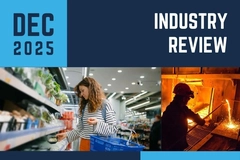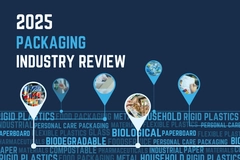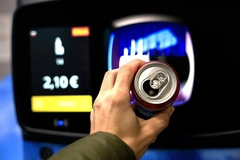Part Two: Digital technology and premiumization revitalize alcoholic beverage sector

13 Jul 2020 --- The alcoholic beverage packaging sector is taking cues from digitalization on how to make products shine on shelf, build engaging brand-consumer relationships and deliver on environmental sustainability targets. In this Part Two coverage of alcohol beverage packaging trends, PackagingInsights sits down with experts to discuss how digital technology and product premiumization are driving the alcoholic beverage industry to new frontiers.
Innova Market Insights lists “Internet of Packaging” as its fourth top packaging trend for 2020.As IoT technologies become more ubiquitous, QR codes, blockchain and Near Field Communication (NFC) are increasingly deployed as tools to elevate engagement and transparency.
Indeed, NFC is huge – but not huge enough in the alcohol packaging sector, says Paolo Ferrari, Chief Marketing Officer and M&A Director at Guala Closures. “Cosmetics and fashion, just to name a few, are industries already much more advanced in the adoption of smart packaging from their consumers. We hope that packaging producers will join forces to facilitate the adoption of these new technologies, not only in the spirits industry, but also in other sectors,” he envisions.
 NFC is huge – but not huge enough in the alcohol packaging sector, says Ferrari of Guala Closures.NFC enhances environmental and consumer relationships
NFC is huge – but not huge enough in the alcohol packaging sector, says Ferrari of Guala Closures.NFC enhances environmental and consumer relationships
Like in other sectors, digitalization has brought significant environmental sustainability improvements in many ways, according to Ferrari. The main advantage is being able to reduce packaging thanks to product information available via the connectivity of the packaging.
“However, connected packaging can also be linked to a concept of sustainability in more unexpected ways. Examples range from stock reduction thanks to a more accurate stock management via track and trace to a strong reduction of CO2 emissions due to a more efficient supply chain management,” says Ferrari.
Mainly, NFC technology is known for enhancing consumer engagement. Last September, Guala Closures released NěSTGATE connected caps. Since its launch, Ferrari details that his company has already seen adoption by Italian Vigneti Massa wines with blockchain followed by Jameson Irish Whiskey launching Jameson Connects in Ireland.
 InTact by Amcor provides brand owners with supply chain traceability benefits.“Using the innovative NěSTGATE technology in the bottle cap, the Jameson Connects community had the opportunity to access incredible experiences and exclusive content, including distillery tours and sweepstakes. The flexibility provided by the NFC system even allowed Jameson to adapt the digital content promoted to its consumers in light of COVID-19. For example, tutorials have been created with famous bartenders for the preparation of cocktails at home,” Ferrari outlines.
InTact by Amcor provides brand owners with supply chain traceability benefits.“Using the innovative NěSTGATE technology in the bottle cap, the Jameson Connects community had the opportunity to access incredible experiences and exclusive content, including distillery tours and sweepstakes. The flexibility provided by the NFC system even allowed Jameson to adapt the digital content promoted to its consumers in light of COVID-19. For example, tutorials have been created with famous bartenders for the preparation of cocktails at home,” Ferrari outlines.
Brand owners benefit from advanced digital tech
NFC technology is not only an advantage for the end-consumer. Brand owners can benefit from NFC’s ability to combat counterfeiting and gray market diversion, two of the major challenges in the premium alcohol beverage sector, says Lucie Neubauerova, Trade & Communication Manager, Amcor Capsules La Défense. Launched in 2016, Amcor’s first connected capsule InTact uses NFC technology to verify the bottle’s authenticity via a smartphone tap and allow brand owners to track and trace the individual bottles all along the supply chain.
“Brand owners can have the peace of mind that the genuine product gets to the consumer and does not tarnish the brand’s reputation with a counterfeited low-quality product. Final consumers can feel secure that they really have the genuine product in front of them. This saves both the brand’s reputation and considerable revenue for the brand owner. This would never be possible without the smart technology,” she flags.
Meanwhile, Riccardo Castagnetti, Director Portfolio Strategy & Planning at Tetra Pak, sees QR codes as being able to rapidly transform packaging into channels for information and interaction. This presents new opportunities for food and beverage producers to turn their packages into full-scale data carriers for the entire value chain. Tetra Pak has plans to use connected packaging technology to replace the duty stamp for alcoholic beverages, largely improving productivity through automation.
 Sidel's auto-adjustable Pick & Place case packer Cermex FlexiPack improves production flexibility.The machinery enabling premiumized packaging
Sidel's auto-adjustable Pick & Place case packer Cermex FlexiPack improves production flexibility.The machinery enabling premiumized packaging
In Part One of PackagingInsights’ reporting, Olivier Goffin, Vice President Global Accounts Beer, Wine & Spirits at Sidel, detailed that consumer profiling is becoming “more and more difficult.” The solution lies within production premiumization, he details, “which is materialized by an increased valorization of the packaging to differentiate oneself in a very competitive market.”
To accommodate the production line demands this trend has placed on the alcohol packaging sector, Sidel introduced Gebo AQFlex. The all-in-one product handling solution ensures the continuous flow of the line by conveying and accumulating any product type – regardless of application, container materials, formats or shapes – to allow for full artistic design liberty. Meanwhile, Gebo AQFlex guarantees full product integrity due to its smooth and contactless single-file handling of the containers.
Additionally, Sidel introduced an agile, auto-adjustable Pick & Place case packer Cermex FlexiPack, which improves flexibility by handling a wide variety of bottles’ diameters and heights regardless of the bottleneck or cap design. “What differentiates Cermex FlexiPack is that it has been designed with a high dose of flexibility and operability in mind for each of its sub-modules – namely, a bottle channel infeed, a numerical-axis gantry manipulator and its Regular Slotted Container (RSC) case conveying part,” Goffin notes.
 Bacardí's new Snapchat Lens.Moreover, its compact design provides up to 40 percent space savings compared to traditional solutions and, due to its small footprint, Gebo AQFlex can be easily integrated into existing production lines.
Bacardí's new Snapchat Lens.Moreover, its compact design provides up to 40 percent space savings compared to traditional solutions and, due to its small footprint, Gebo AQFlex can be easily integrated into existing production lines.
Digital printing married with seasonal packaging
Melianthe Leeman, Global Innovation Leader at Owens-Illinois, echoes that sustainable design and premiumization are driving innovation at O-I Expressions, the company’s bottle customization service. Enabled by digital printing, it allows brands to create highly personalized and customized glass packaging at flexible volume, industrial speeds and affordable value, with a wide range of color and design possibilities.
“The technology taps into a trend for customized and personalized packaging. We are increasingly asked to support short campaigns, such as seasonal promotions or limited editions which enable customers to build brand engagement, consumer satisfaction, loyalty and demonstrate premium value,” Leeman affirms.
Bacardí rum recently partnered with O-I Expressions to create a limited edition, digitally printed bottle. An innovative Augmented Reality (AR) experience and a Snapchat Lens can be unlocked via the Snapcode on the bottle. Replacing the sleeve with direct-to-bottle digital printing and using organic inks improves the environmental footprint of the product and reduces its use of plastic.
When brands interpret either the digital technology or the premiumization trends, Ferrari of Guala Closures affirms that “innovation has always been a key driver in the packaging industry for spirits.”
By Anni Schleicher










